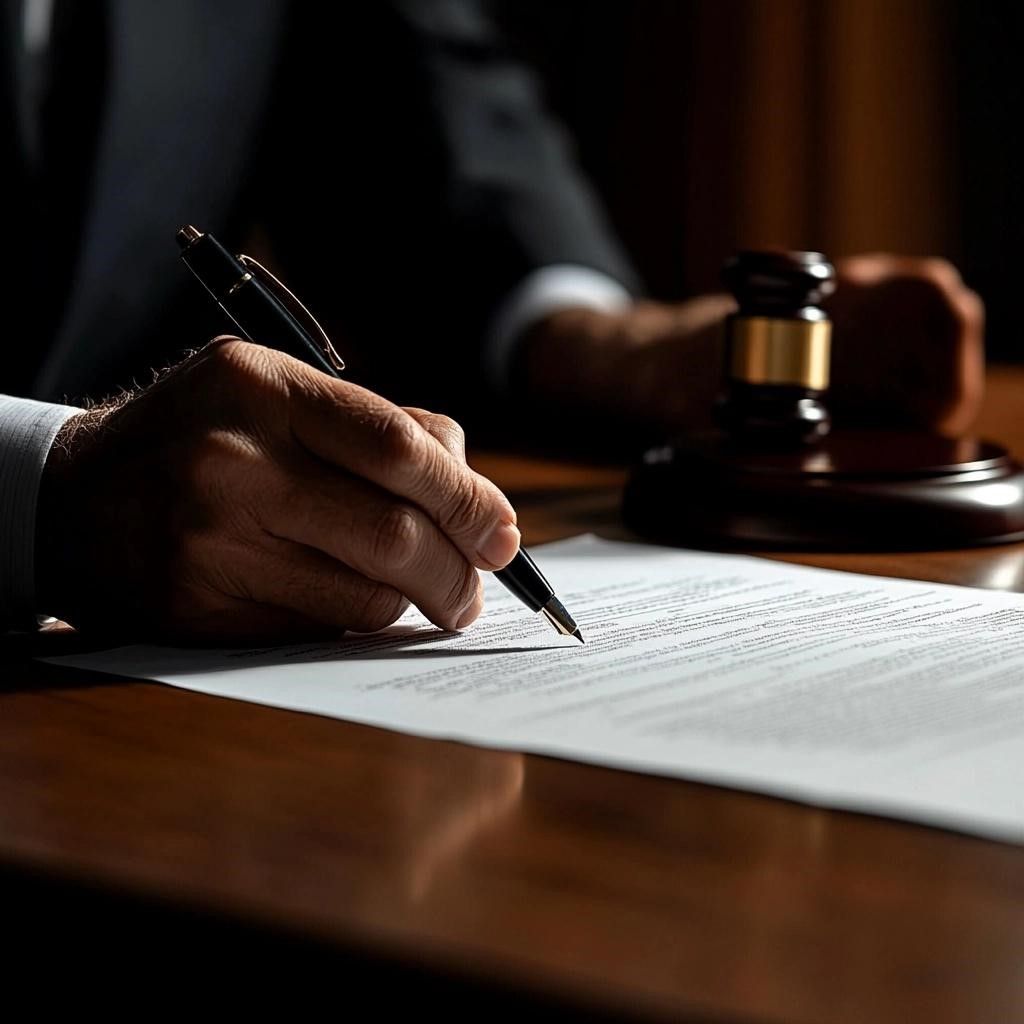How to File a Defamation Lawsuit in Torrance – 5 Steps
By Managing Attorney - David Mallen

Defamation, encompassing both libel (written defamation) and slander (spoken defamation), can have devastating effects on individuals and businesses alike.
In California, defamation is defined as a false and unprivileged statement of fact that is harmful to someone's reputation and published negligently or maliciously. Addressing statements promptly is crucial to protect your reputation and mitigate potential damages in a defamation case.
Understanding Defamation in California
Defamation occurs when someone makes a false statement presented as fact that injures another party's reputation. In California, defamation is categorized into two types: libel and slander. Libel refers to written or published defamatory statements, while slander pertains to spoken defamatory statements.
Legal Criteria for Defamation in California
To establish a defamation claim in California, you must prove defamation by demonstrating the following elements:
- False Statement: The statement in question must be false. Truthful statements, regardless of their impact, do not constitute defamation.
- Unprivileged: The statement must not be protected by any legal privilege. Certain communications, such as those made during judicial proceedings, are privileged and immune from defamation claims.
- Publication: The statement must have been made to a third party, meaning someone other than the person defamed heard or read it.
- Injury: The statement must have caused harm to the subject's reputation, leading to damages such as loss of business, emotional distress, or other negative consequences.
Assessing the Validity of Your Defamation Claim
After identifying the statement in question, the next step is to evaluate its impact and consider any legal challenges that may arise, ensuring your claim stands on solid ground.
Identifying the Defamatory Statement
The first step in assessing a defamation of character claim is to pinpoint the exact statement that is allegedly defamatory. This involves gathering evidence of the specific false statement made, including written statements, spoken remarks, or online publications. Documentation such as emails, social media posts, or recorded conversations can serve as crucial evidence.
Evaluating Harm and Damages
Once the defamatory statement is identified, it's essential to assess how it has harmed your reputation, career, or personal life. This could include loss of income, job opportunities, business relationships, or emotional distress. Quantifying these damages is vital, as it directly impacts the potential compensation you may seek.
Considering Defenses to Defamation
Before proceeding with a defamation suit, it's important to consider potential defenses the defendant might raise:
- Truth: If the statement is true, it is a complete defense against defamation.
- Opinion: Statements of opinion are generally not actionable, as defamation pertains to false statements of fact.
- Privilege: Certain communications are protected under privileged status, such as statements made during judicial proceedings or in governmental reports.
Step 1: Consult with a Defamation Attorney in Torrance

If you’ve been the victim of false statements that have harmed your career, reputation, or financial stability, you may have grounds for a defamation lawsuit. Whether it’s libel or slander, these false statements can cause lasting damage, and taking legal action is often necessary to set the record straight.
Importance of Legal Counsel
Navigating the complexities of defamation law requires professional guidance. An experienced defamation attorney can assess the merits of your case, advise you on the best course of action, and help you understand the potential outcomes.
Finding the Right Attorney
When seeking legal representation, it's crucial to find an attorney experienced in defamation cases within California. Researching and selecting an attorney with a proven track record in handling similar cases can significantly impact the success of your lawsuit.
Initial Consultation
During the initial consultation, you'll discuss the specifics of your case, including the defamatory statements, evidence collected, and the harm suffered. The attorney will evaluate the potential for a successful lawsuit and outline the steps involved in pursuing your claim.
Step 2: Gathering Evidence
With legal guidance secured, the next step is collecting solid evidence to support your claim.
Documenting the Defamatory Statement
Collecting all instances of the defamatory statement is crucial. This includes screenshots, recordings, written publications, or any other form of the statement. Ensuring that this evidence is preserved and accurately reflects the defamatory content is essential for building a strong case.
Identifying Witnesses
Identifying a public figure who heard or read the defamatory statement and can testify to its impact is vital. Witnesses can provide firsthand accounts of how the statement affected your reputation and can corroborate your claims of harm.
Demonstrating Harm
Compiling evidence of punitive damages, such as loss of income, emotional distress, or other quantifiable losses, is necessary to substantiate your claim. This may include financial records, medical reports, or testimonies from colleagues and clients.
Step 3: Attempting Pre-Litigation Resolution
Before taking legal action, it's worth exploring ways to resolve the issue outside of court.
Cease and Desist Letter
Before filing a lawsuit, it's often advisable to send a cease and desist letter to the offending party. This formal notice demands the cessation of defamatory actions and may lead to a resolution without court intervention.
Negotiation and Settlement
Exploring the possibility of resolving the issue without court intervention, potentially through retractions or financial compensation, can save time and resources. Settlement negotiations can lead to a mutually agreeable resolution and avoid the uncertainties of a trial.
Step 4: Filing the Lawsuit
When pre-litigation efforts don’t lead to a resolution, the next step is taking legal action.
Drafting the Complaint
If pre-litigation efforts fail, the next step is to file a lawsuit. This involves preparing a legal document outlining your claims, the defamatory statements, and the damages sought. The complaint must be precise and comply with California's legal standards.
Filing with the Appropriate Court
Submitting the complaint to the correct California court, considering jurisdiction and venue, is crucial. Filing in the appropriate court ensures that your case is heard by the proper judicial authority.
Serving the Defendant
Ensuring the defendant is formally notified of the lawsuit through proper legal channels is a critical step. Proper service of process is necessary for the court to exercise jurisdiction over the defendant.
Step 5: Navigating the Legal Process
Embarking on a defamation lawsuit in Torrance requires a thorough understanding of the legal process to effectively advocate for your rights. This journey encompasses several critical stages, each demanding meticulous preparation and strategic execution.
Discovery Phase
The discovery phase is a pivotal component of civil litigation, serving as the foundation upon which cases are built. During this period, both parties exchange pertinent information and evidence to substantiate their claims and defenses. This process ensures transparency and allows each side to assess the strengths and weaknesses of the opposing party's case.
Key Aspects of Discovery:
- Depositions: Sworn out-of-court testimonies where attorneys question parties or witnesses involved in the case. These sessions are recorded and can be used in court proceedings.
- Interrogatories: Written questions that require written answers under oath. They are designed to gather detailed information relevant to the case.
- Requests for Production: Formal requests to obtain documents, electronic records, or other tangible evidence pertinent to the lawsuit.
- Requests for Admissions: Statements presented to the opposing party for acknowledgment or denial, aiming to simplify the issues for trial.
Engaging in discovery allows both sides to uncover critical facts, identify supporting witnesses, and gather documentary evidence. It's essential to respond to discovery requests promptly and thoroughly to avoid potential sanctions or delays in the proceedings.
Pre-Trial Motions
Before the trial commences, parties may file pre-trial motions to address specific legal issues, streamline the trial process, or potentially resolve the case without proceeding to a full trial. These motions are instrumental in shaping the course of the litigation.
Common Pre-Trial Motions:
- Motion to Dismiss: Filed by the defendant, asserting that the plaintiff's complaint is legally insufficient and should be dismissed. Grounds can include lack of jurisdiction, failure to state a claim, or other procedural deficiencies.
- Motion for Summary Judgment: Argues that there are no genuine disputes of material fact, and the moving party is entitled to judgment as a matter of law. This motion, if granted, can resolve the case or specific issues without a trial.
- Motions in Limine: Requests to exclude certain evidence from being presented at trial, typically because it is deemed irrelevant, prejudicial, or inadmissible under the rules of evidence.
Addressing these motions effectively requires a comprehensive understanding of legal standards and persuasive argumentation. The outcomes of pre-trial motions can significantly influence the direction and duration of the case.
Trial Proceedings
If the case proceeds to trial, both parties present their arguments, evidence, and witness testimonies before a judge or jury. The trial is the culmination of the litigation process, where each side seeks to substantiate their claims and defenses.
Stages of a Civil Trial:
- Jury Selection (Voir Dire): If the trial involves a jury, potential jurors are questioned to ensure impartiality and suitability for the case.
- Opening Statements: Both parties outline their case theories, providing a roadmap of the evidence and arguments they intend to present.
- Presentation of Evidence:
- Plaintiff's Case-in-Chief: The plaintiff presents evidence and calls witnesses to support their claims.
- Defendant's Case-in-Chief: The defendant presents evidence and witnesses to counter the plaintiff's allegations.
- Cross-Examination: Each party has the opportunity to question the opposing side's witnesses, challenging their credibility and the validity of their testimony.
- Closing Arguments: Both sides summarize their cases, highlighting key evidence and persuading the judge or jury to rule in their favor.
- Jury Deliberation and Verdict: The jury deliberates on the evidence presented and renders a verdict. In bench trials, the judge decides the outcome.
Throughout the trial, adherence to procedural rules and effective advocacy are paramount to presenting a compelling case.
Post-Trial Actions
Following the trial's conclusion, several post-trial actions may ensue, depending on the verdict and the parties' satisfaction with the outcome.
Potential Post-Trial Steps:
- Post-Trial Motions:
- Motion for a New Trial: Argues that errors during the trial justify conducting a new trial.
- Motion for Judgment Notwithstanding the Verdict (JNOV): Requests the court to overturn the jury's verdict on the grounds that it was unreasonable or unsupported by the evidence.
- Appeals: If a party believes that legal errors affected the trial's outcome, they may appeal to a higher court. The appellate court reviews the record for errors and determines whether to uphold or reverse the lower court's decision.
- Enforcement of Judgment: The prevailing party may need to take additional steps to collect damages awarded, such as garnishing wages or placing liens on property.
Understanding these post-trial options is crucial for both plaintiffs and defendants, as they can impact the final resolution and enforcement of the court's judgment.
Why Choose Employee Law Group for Your Defamation of Character Lawsuit?

At Employee Law Group, we specialize in defamation of character lawsuits, helping individuals navigate the complexities of filing a defamation lawsuit. Whether you’re dealing with online defamation, workplace rumors, or false accusations in the media, our team is committed to protecting your rights.
We’ll assess actual damages in a defamation case, build a strong legal strategy, and fight for the compensation you deserve.
If you’re considering a lawsuit for defamation in Torrance, CA, don’t wait. Speak with a lawyer at Employee Law Group today to explore your options and take the first step toward restoring your reputation.
Frequently Asked Questions (FAQs)
1. What is the statute of limitations for filing a defamation lawsuit in California?
In California, you must file a defamation lawsuit within one year from the date the defamatory statement was made or published. This statute of limitations underscores the importance of acting promptly to protect your reputation.
2. Can opinions be considered defamatory?
Generally, opinions are not considered defamatory unless they imply false facts. Defamation pertains to false statements of fact that harm someone's reputation.
3. What is an example of Internet defamation?
An example of Internet defamation is when someone posts a false and damaging statement about a person or business on social media, a blog, or a review site. For instance, if a former employee falsely accuses their previous employer of illegal activities in an online forum, and this harms the company's reputation, it could be considered Internet defamation.
4. Is it necessary to prove malice in a defamation case?
In cases of defamation per se (statements that are inherently harmful), there may be no need to prove actual malice. Such statements are considered defamatory on their face and can include false accusations of a crime or statements that injure someone in their profession.
5. Can I sue someone for defamation if they retract their statement?
A retraction may mitigate damages but does not necessarily prevent you from suing for defamation. The impact of a retraction depends on the circumstances and timing of the retraction.
Conclusion
Addressing defamation is imperative to safeguard one's reputation and professional standing. The legal process, while intricate, provides a structured pathway to seek redress and hold accountable those who disseminate falsehoods. Engaging experienced legal counsel is essential to navigate the complexities of defamation law effectively and to advocate for your rights throughout the litigation process.
If you believe you’ve been defamed and need legal guidance, Employee Law Group is here to help. Contact us today for a free consultation and let our experienced attorneys fight for your rights.

Managing Attorney - David Mallen
David Mallen is the managing attorney at Employee Law Group in Torrance, California, and a respected labor and employment lawyer who has represented thousands of workers since beginning his practice in 1992. He has been recognized as a Southern California Super Lawyer every year from 2004 to the present.




